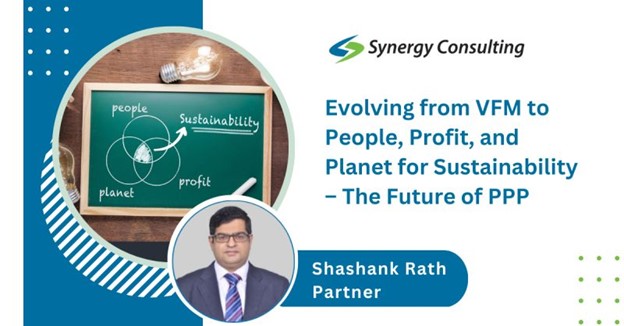By Shashank Rath, Partner at Synergy Consulting Inc.
PPP stands for Public-Private Partnership. A form of project delivery under which the public sector or government entity, and private sector or project developer, collaborate to develop, finance, build and operate an asset over a concession period, often in the range of 20-25 years.
A tender process is run by the public party for project implementation. Government entities evaluate the invited group of private parties for the most competitive, preferred bid. The process begins with the technical evaluation designed to eliminate submissions which are not suitable. The most competitive commercial offer is typically chosen to be the preferred bidder.
Sustainability is not just a buzzword! There is increasing global focus to meet the 2030 Agenda for Sustainable Development of the United Nations. Corporate Social Responsibility or triple bottom line comprised of Profit, People, and Planet (PPP) has evolved to be the focus of the Public Party’s evaluation. Previously, government agencies evaluated project delivery for Value for Money (VFM) as discussed in an earlier article.
A shift in the evaluation parameters forced a change in the bidder decision process. For sustainability, governments and lenders started focusing on a broader set of parameters than purely financial. The change in mindset is driven by the focus to improve quality of life yet reduce carbon footprint to deliver value-for-money and value-for-people.
A few years back, United Nations Economic Commission for Europe (UNECE) linked the PPP project implementation to the 17 World Bank’s Strategic Development Goals (SDGs). This effort was designed to improve connectivity within the region, reduce environmental pressures, leverage resources for sustainably while innovating more dynamic and resilient economies. The UNECE PPP evaluation methodology provides an SDG technical evaluation framework that tackles access and equity, economic effectiveness, environmental sustainability and resilience, replicability, and stakeholder engagement.
As mentioned earlier, infrastructure project implementation is now being expected to cover Profit by offering sufficient commercial benefits to shareholders, People with focus on relevant social elements, and Planet putting emphasis on the environmental impact. Many recognize this as the triple bottom line or the newly evolved PPP, thereby giving a new meaning to the acronym PPP, i.e. People, Planet, Profit.
